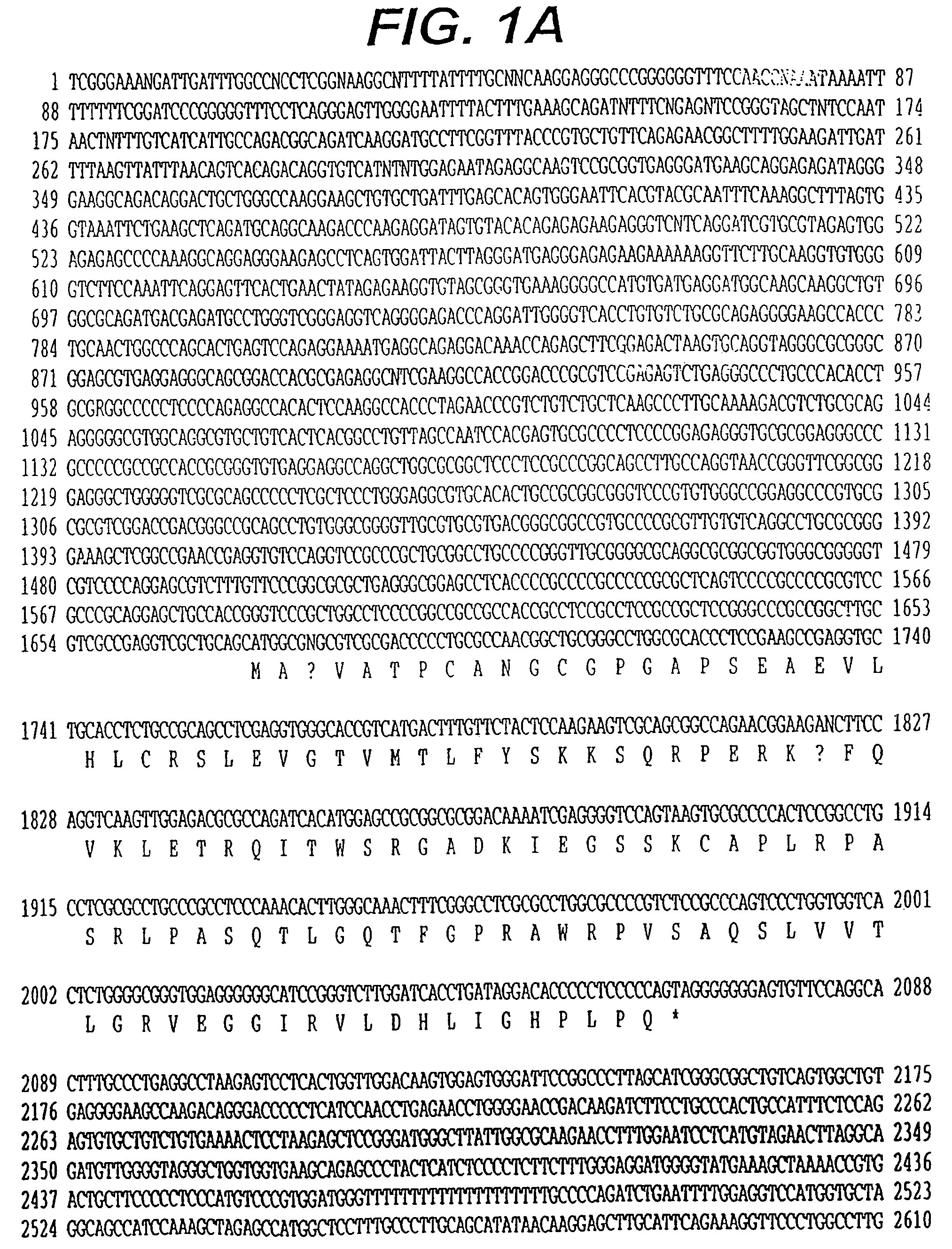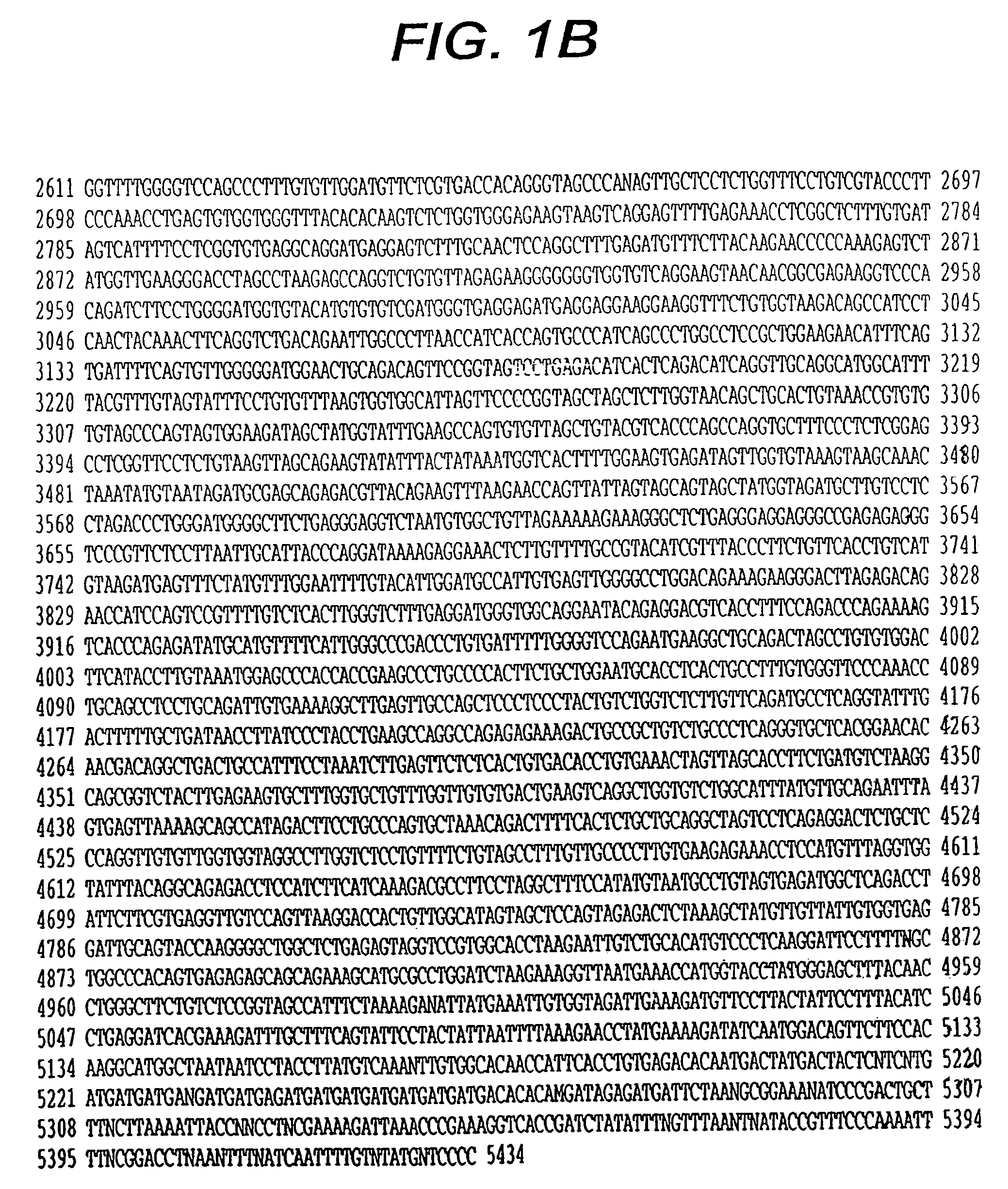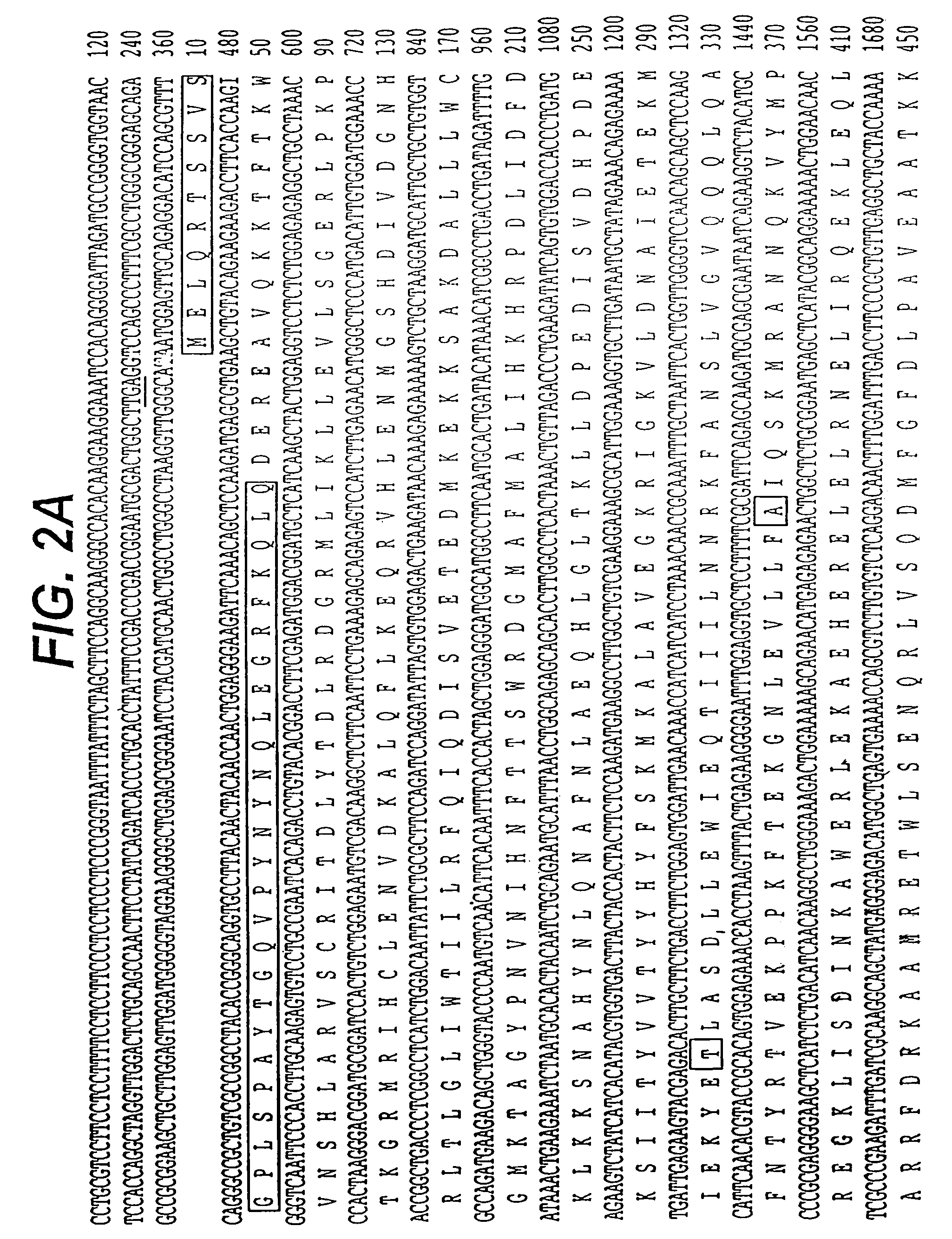Peptides and proteins for early liver development and antibodies thereto
a technology applied in the field of peptides and proteins, can solve the problems of severe problems associated with a breakdown of liver function, untreatable severe problems, and not a practical approach to the problem
- Summary
- Abstract
- Description
- Claims
- Application Information
AI Technical Summary
Benefits of technology
Problems solved by technology
Method used
Image
Examples
example 1
[0094]In accordance with the cloning strategy of the present invention to identify genes involved in early mouse liver development, we have isolated Praja-1, a gene with similar sequences to the Drosophila melanogaster gene goliath (gl), and which is involved in the fate of mesodermal cells ultimately forming gut musculatures, fat body, and the heart. Praja-1 is a 2.1 kb gene encoding a putative 423 amino acid ORF and includes a COOH-terminal RING-H2 domain. Using the Jackson Laboratory BSS panel, we have localized praja-1 on chromosome X at 36 cM, near the X inactivation center gene, Xist. Northern blot analysis demonstrated three transcripts (3.1, 2.6 and 2.1 kb) in mRNA from adult mouse tissues brain, liver, and kidney as well as in mRNA from developing mouse embryos (days 7, 11, and 17 post coitus, or p.c.). In vitro transcription / translation yielded two products with a Mr of 55.6 and 56.9 kD. The presence of the RING-H2 domain, a proline-rich region at the COOH-end, and regions...
example 2
[0105]In accordance with the present invention, investigations were made with regard to the induction of differentiation in liver tissues in order to isolate and identify early developing liver proteins for use in therapies involving the liver and liver functions. In the developing fetus, inductive interactions, intercellular communication and the establishment of cell polarity are critical for growth and patterning during development. However, the precise mechanisms by which these effect hepatocyte differentiation or liver development have not previously been elucidated. Mammalian liver development was first recognized to be established through a specific sequence of interactions between mesenchymal and endodermal embryonic tissues. At 9.5 days of mouse gestation, upon signaling from the cardiac mesenchyme, endodermal cells from the liver diverticulum proliferate and migrate into the surrounding septum transversum. This specific area of loose mesenchyme in turn differentiates into ...
example 3
[0140]In accordance with the present invention, genes such as the ones discussed above which are involved in growth and differentiation of hepatocytes will also be involved in liver repair. This is important because cirrhosis or end stage liver disease is: (1) the fourth most common cause of death in the U.S; (2) related to fibrosis and nodular hyperplasia; (3) an important risk factor for hepatocellular carcinoma; and (4) currently has no suitable medical treatment.
[0141]One such mode of treatment will be the use of the elf protein, such as the three isoforms elf 1-3 as set forth above. In FIG. 13, the ELF spectrin membrane skeleton is shown. Spectrins are rod shaped, alpha and beta subunits. Helix linked by short actin filaments at junctional complexes that include AE2, protein 4.1, myosin. This membrane skeleton attaches to the plasma membrane at 2 sites, by ankyrin and the beta subunit of spectrin.
[0142]In FIG. 14, a comparison of ELF3 and 1 to Beta general spectrin is shown. Sp...
PUM
 Login to View More
Login to View More Abstract
Description
Claims
Application Information
 Login to View More
Login to View More - R&D
- Intellectual Property
- Life Sciences
- Materials
- Tech Scout
- Unparalleled Data Quality
- Higher Quality Content
- 60% Fewer Hallucinations
Browse by: Latest US Patents, China's latest patents, Technical Efficacy Thesaurus, Application Domain, Technology Topic, Popular Technical Reports.
© 2025 PatSnap. All rights reserved.Legal|Privacy policy|Modern Slavery Act Transparency Statement|Sitemap|About US| Contact US: help@patsnap.com



